
Touch Aesthetics Activation Images
Photography by Roz Kumari
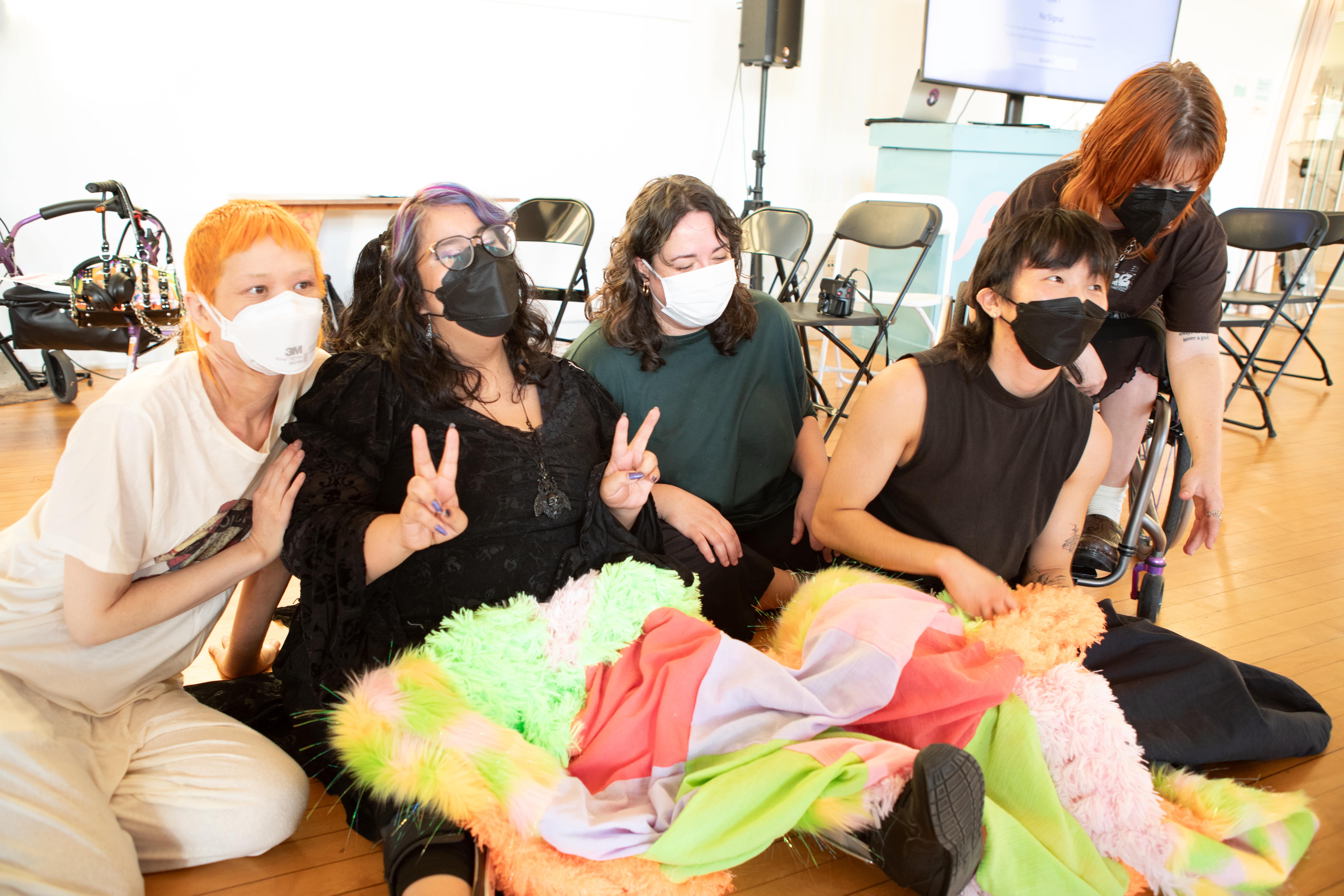
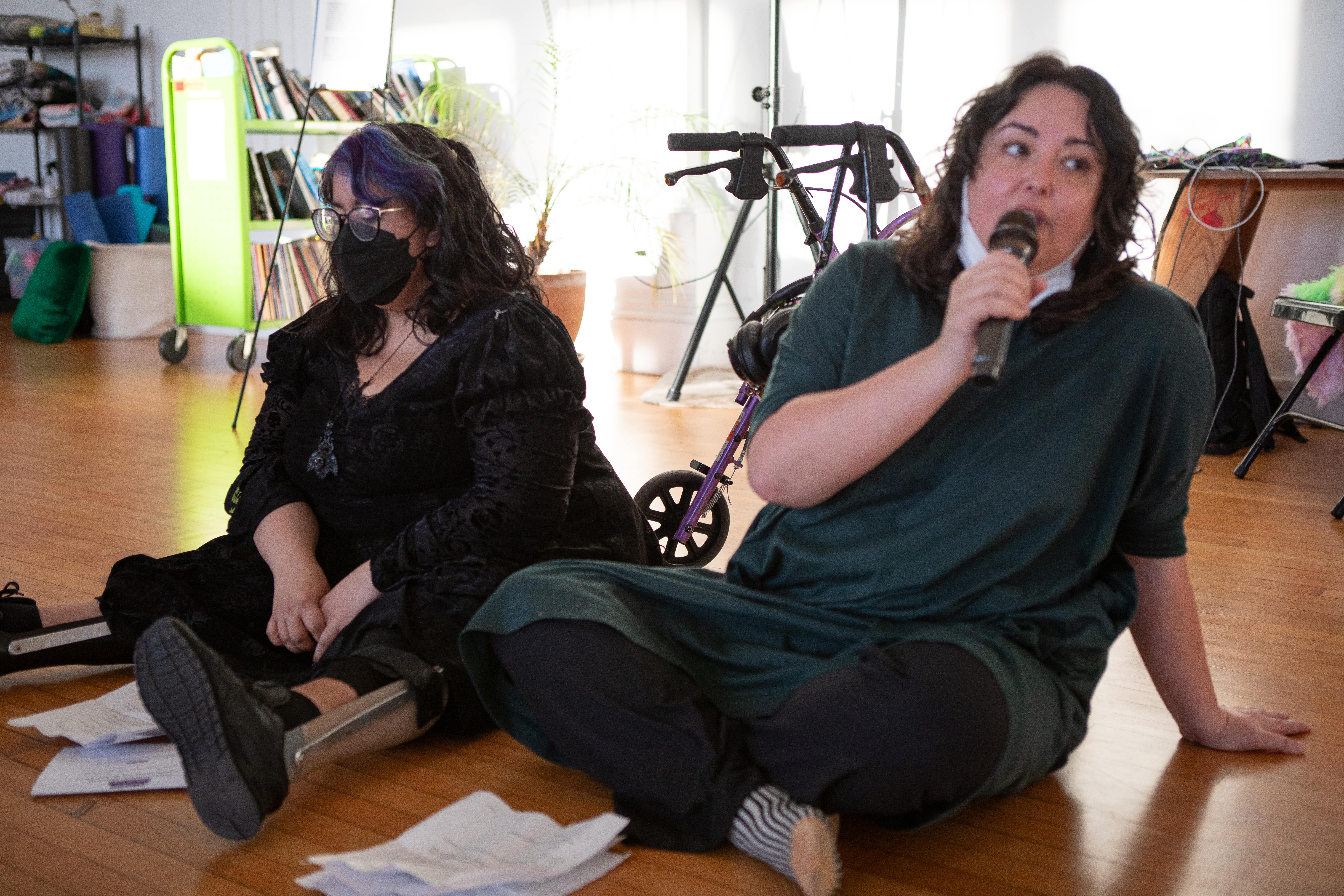
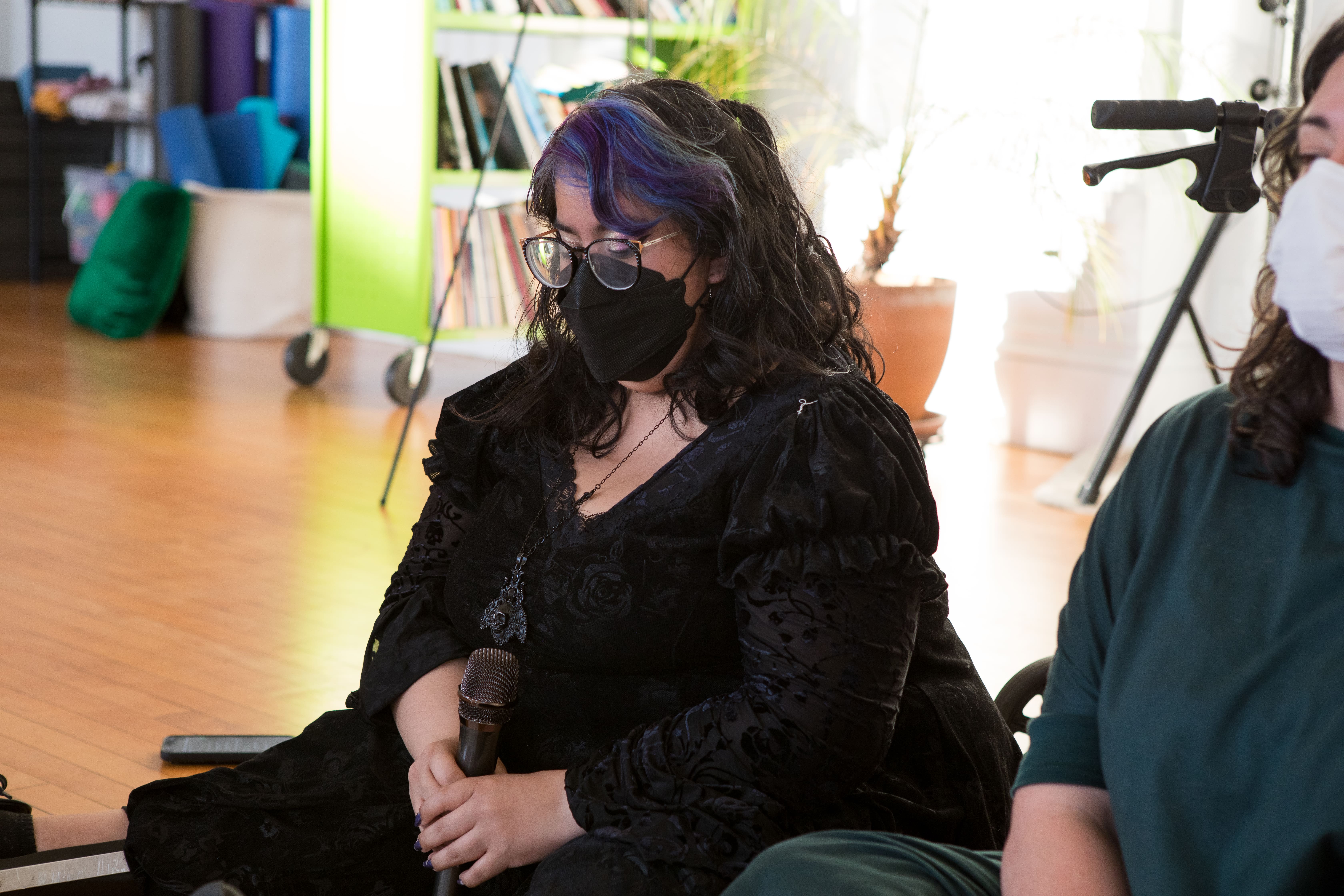
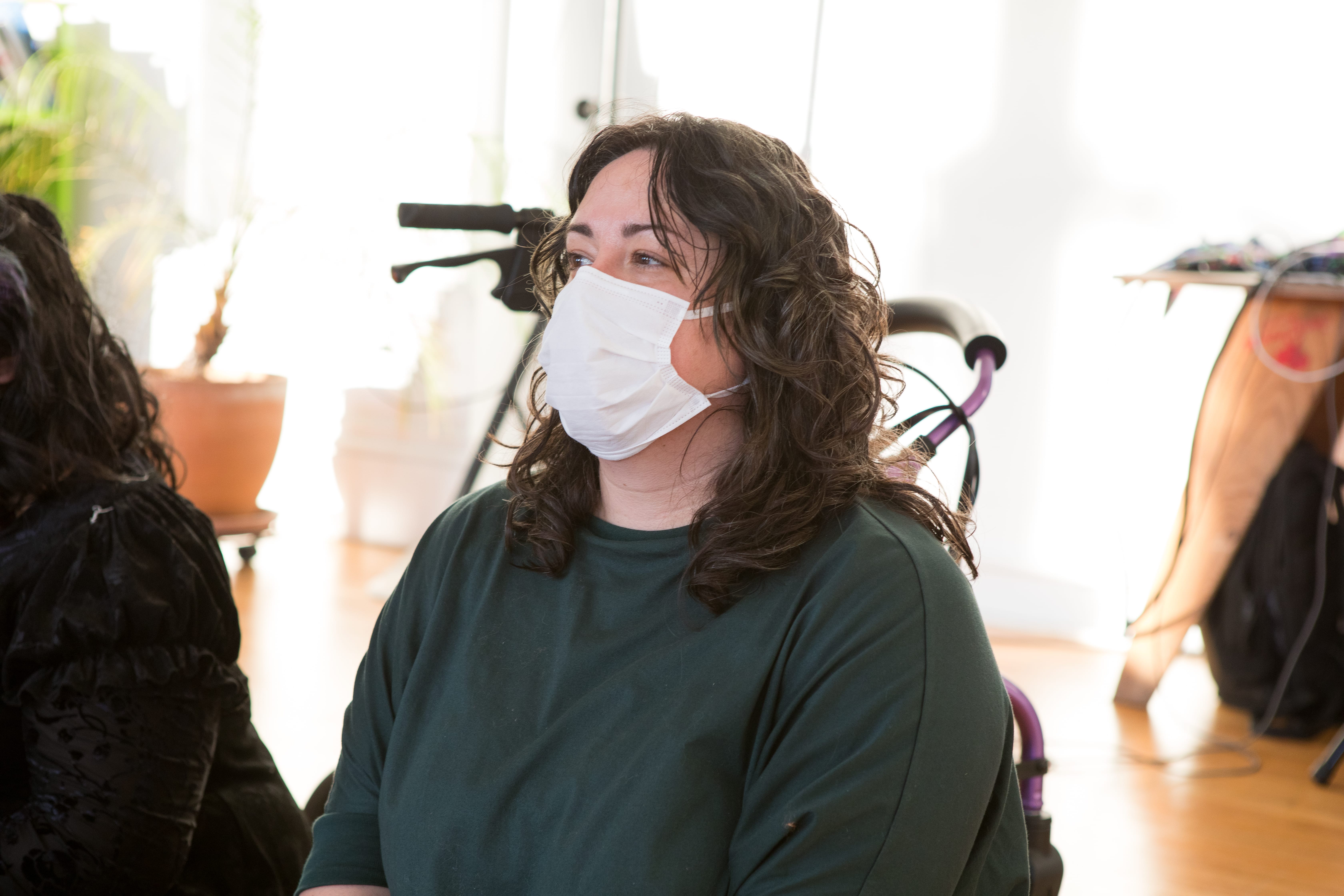
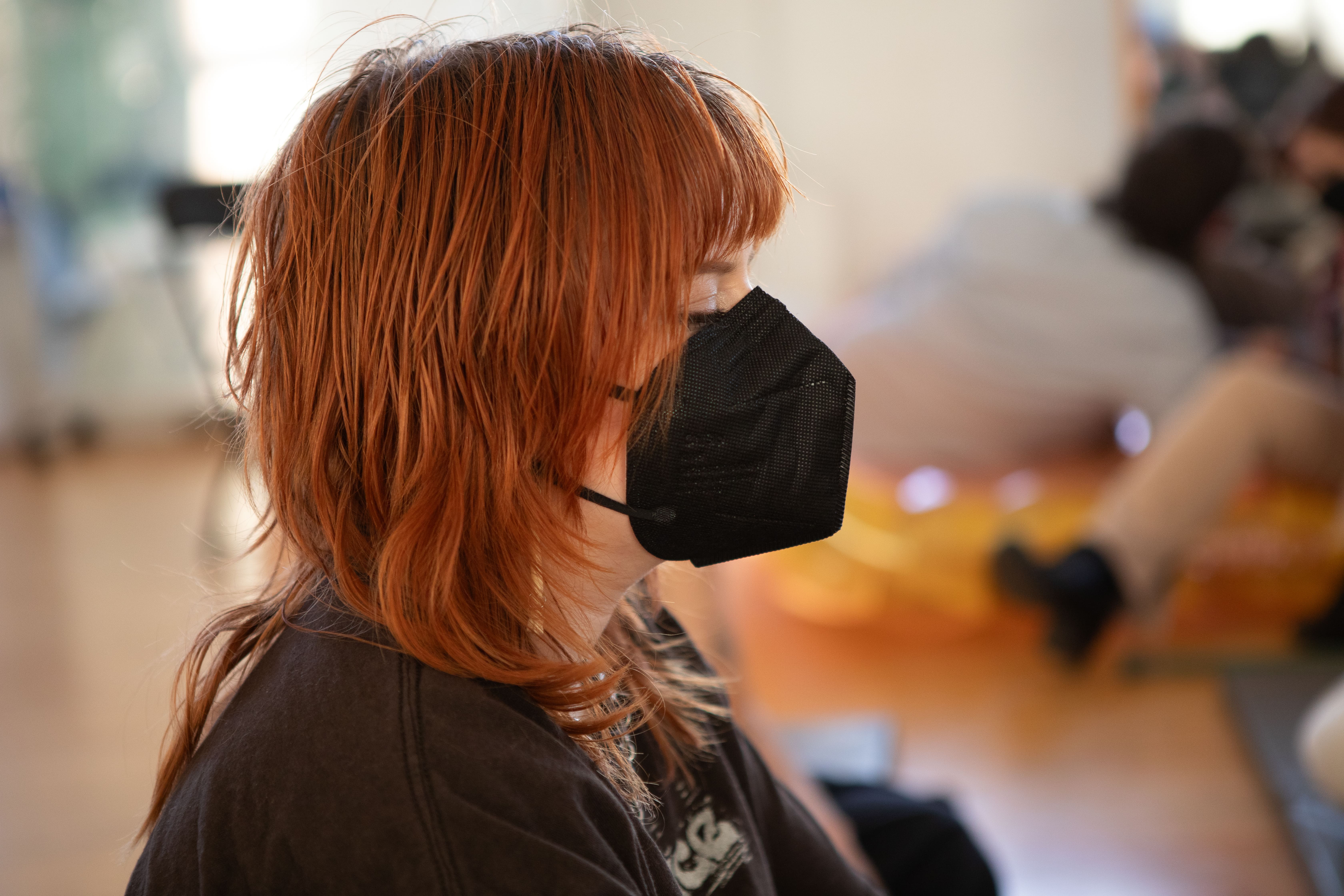
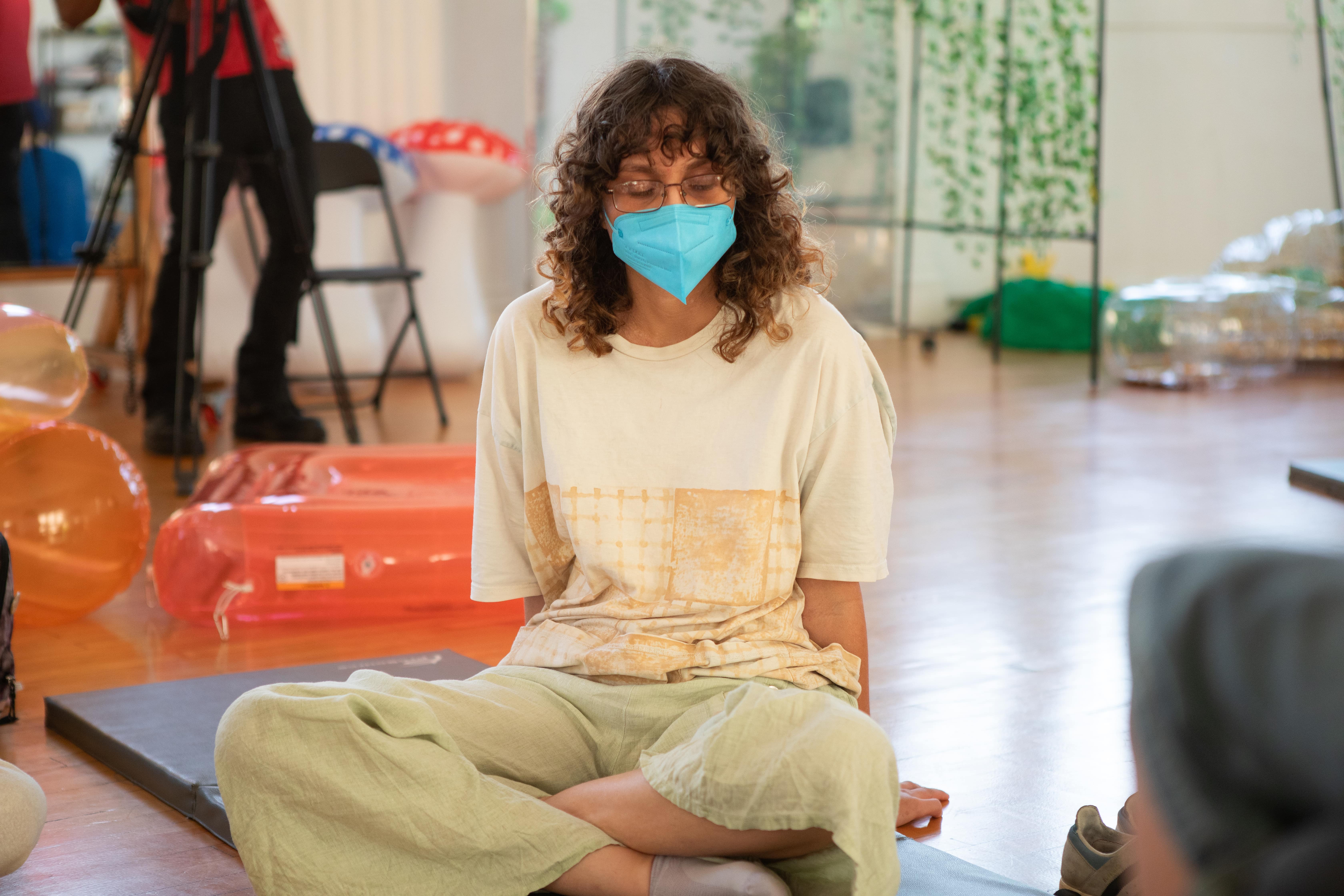
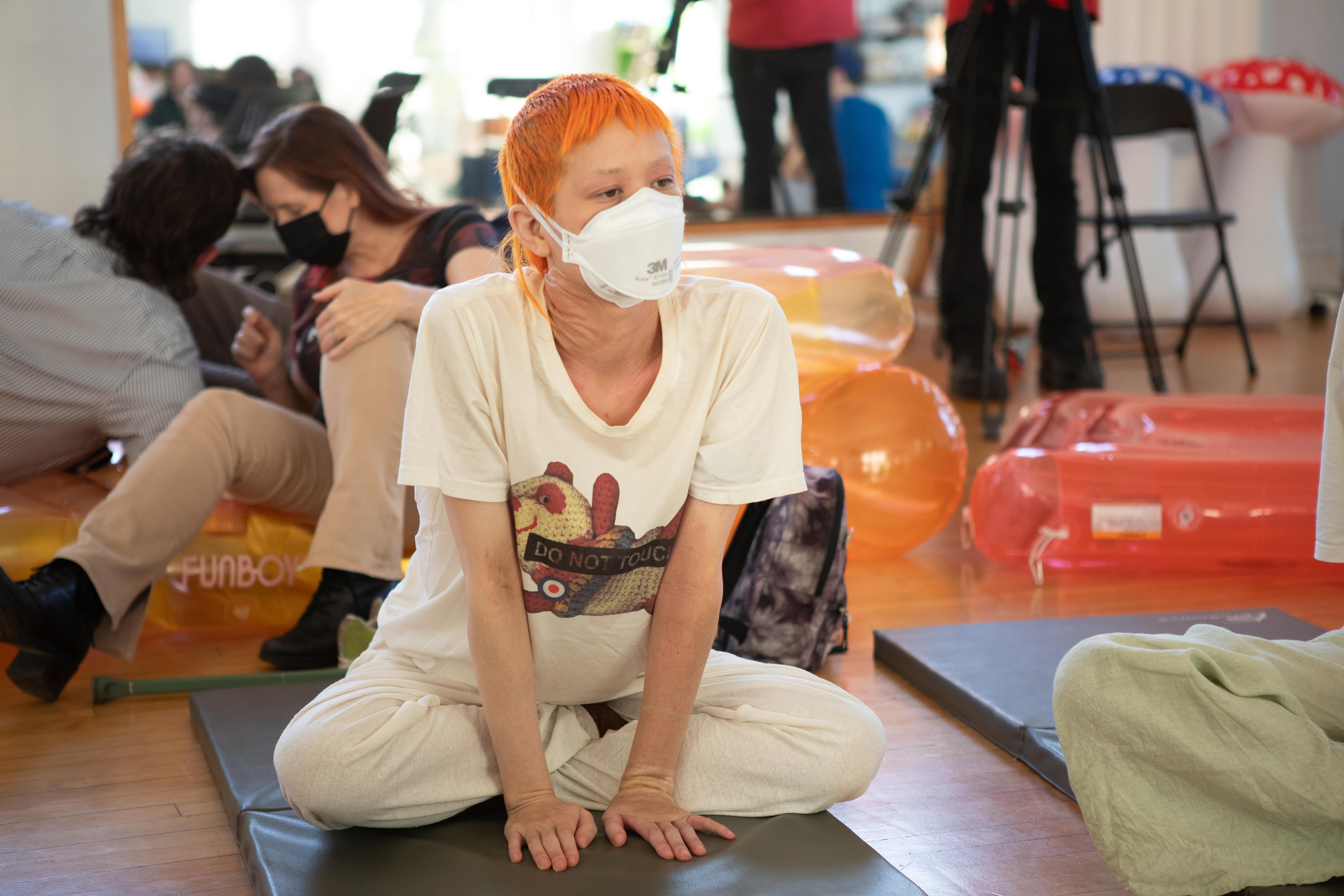
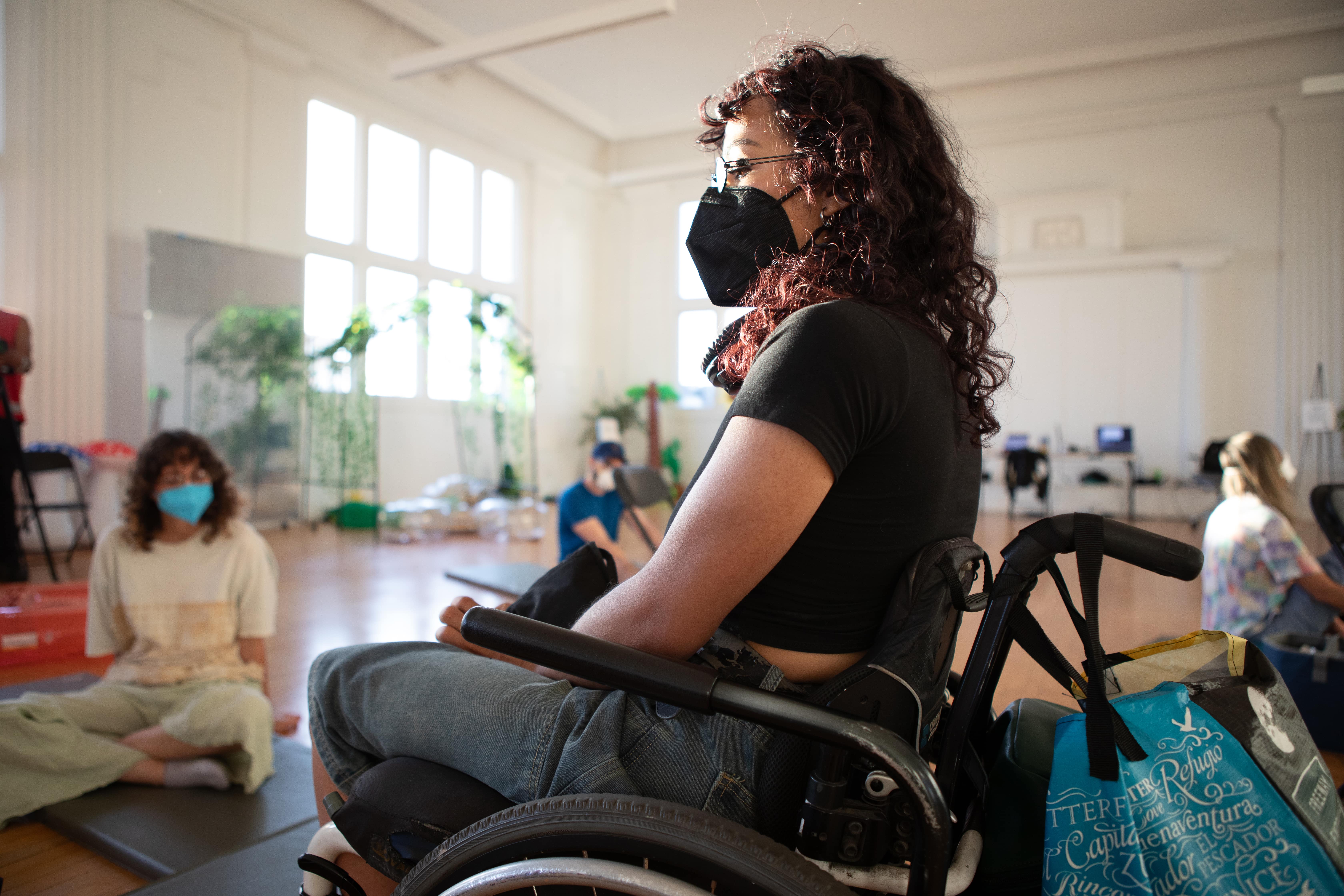
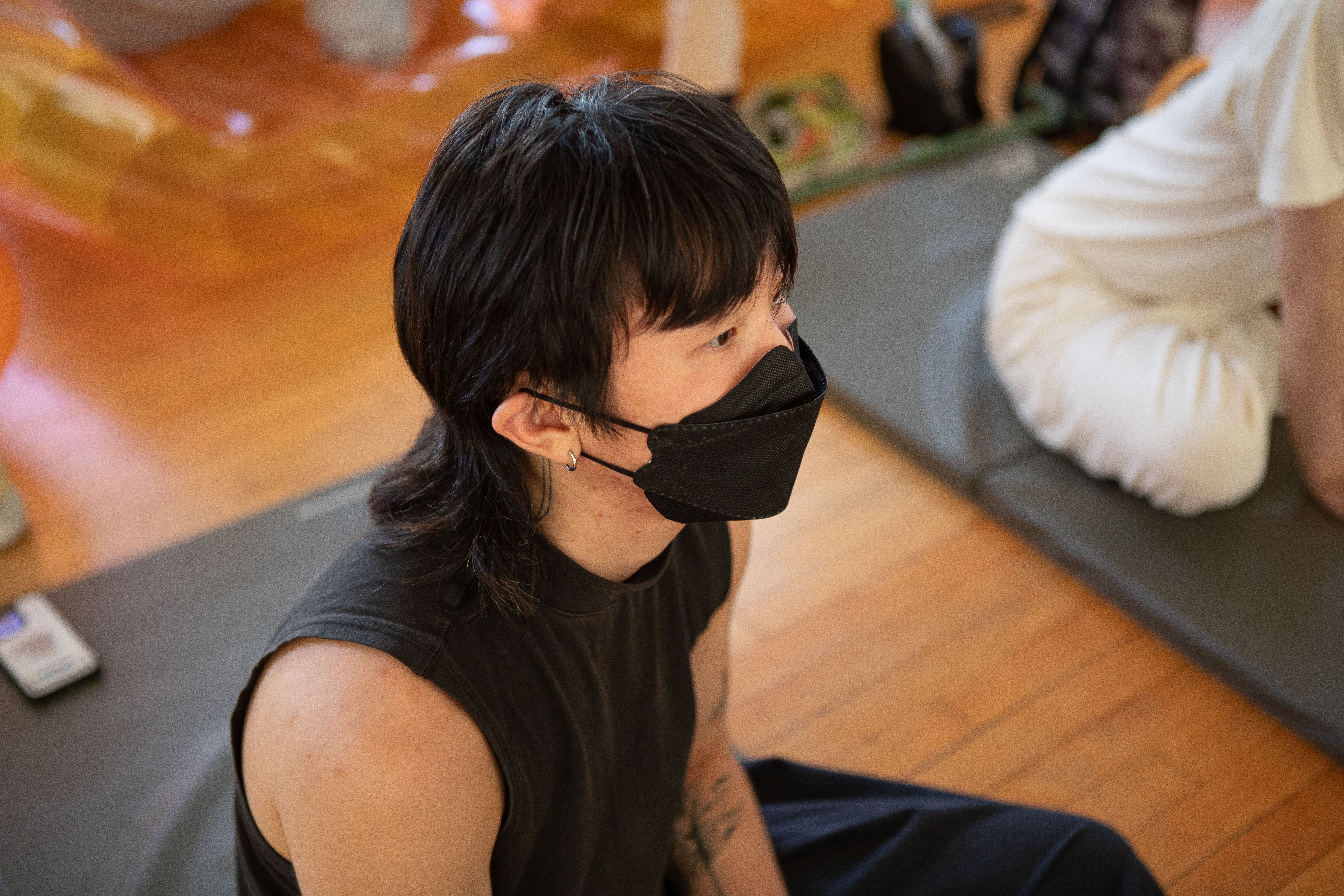
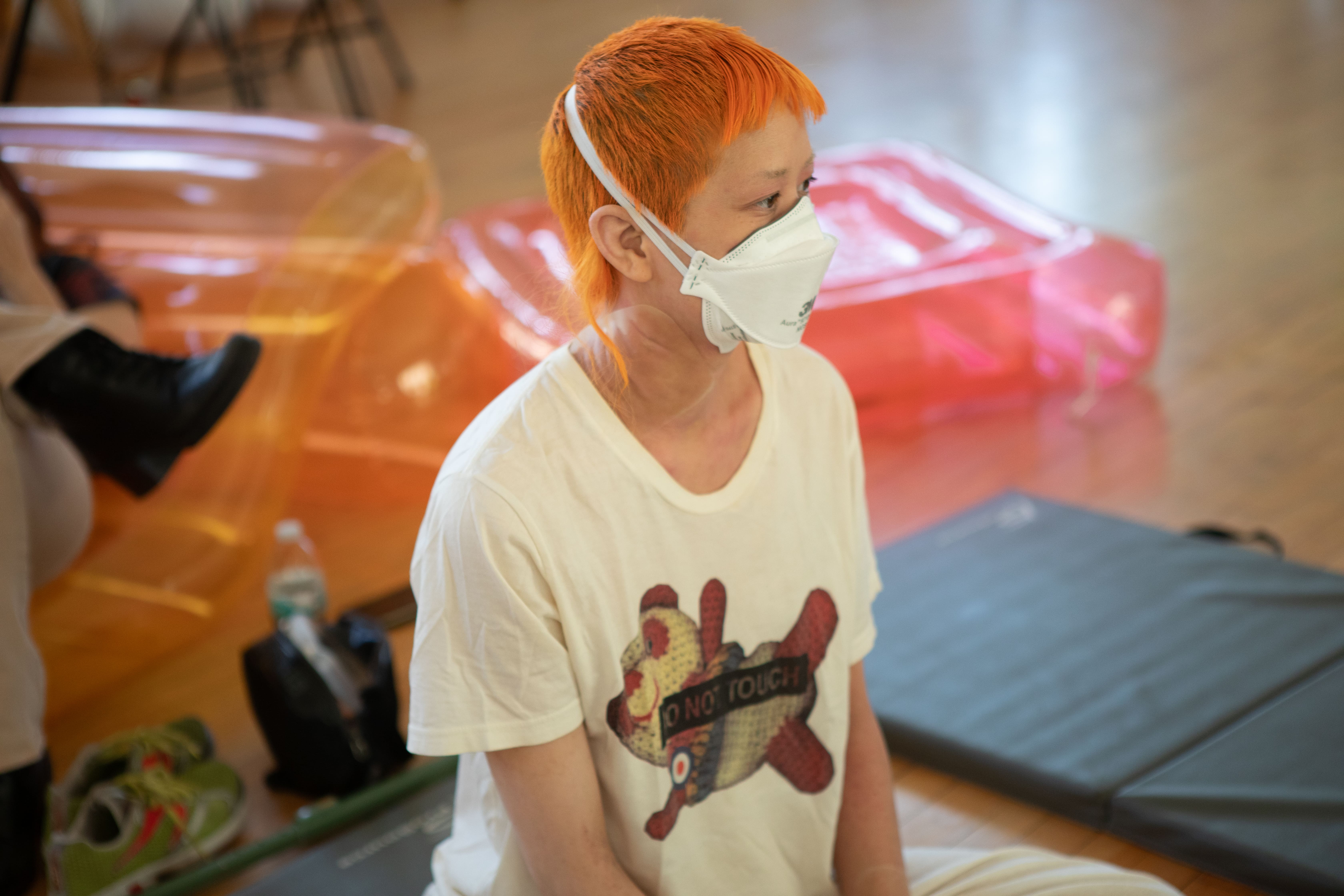
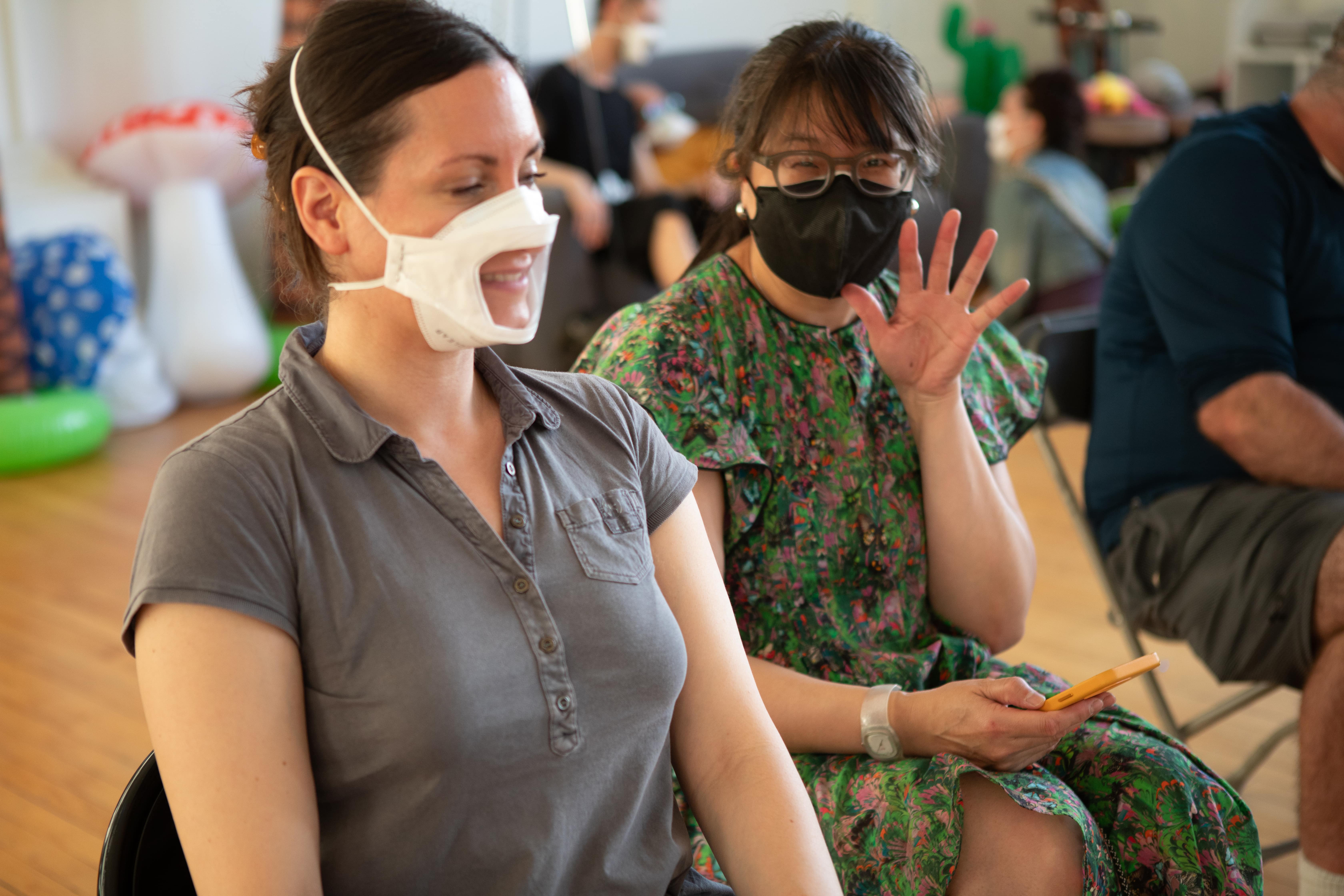
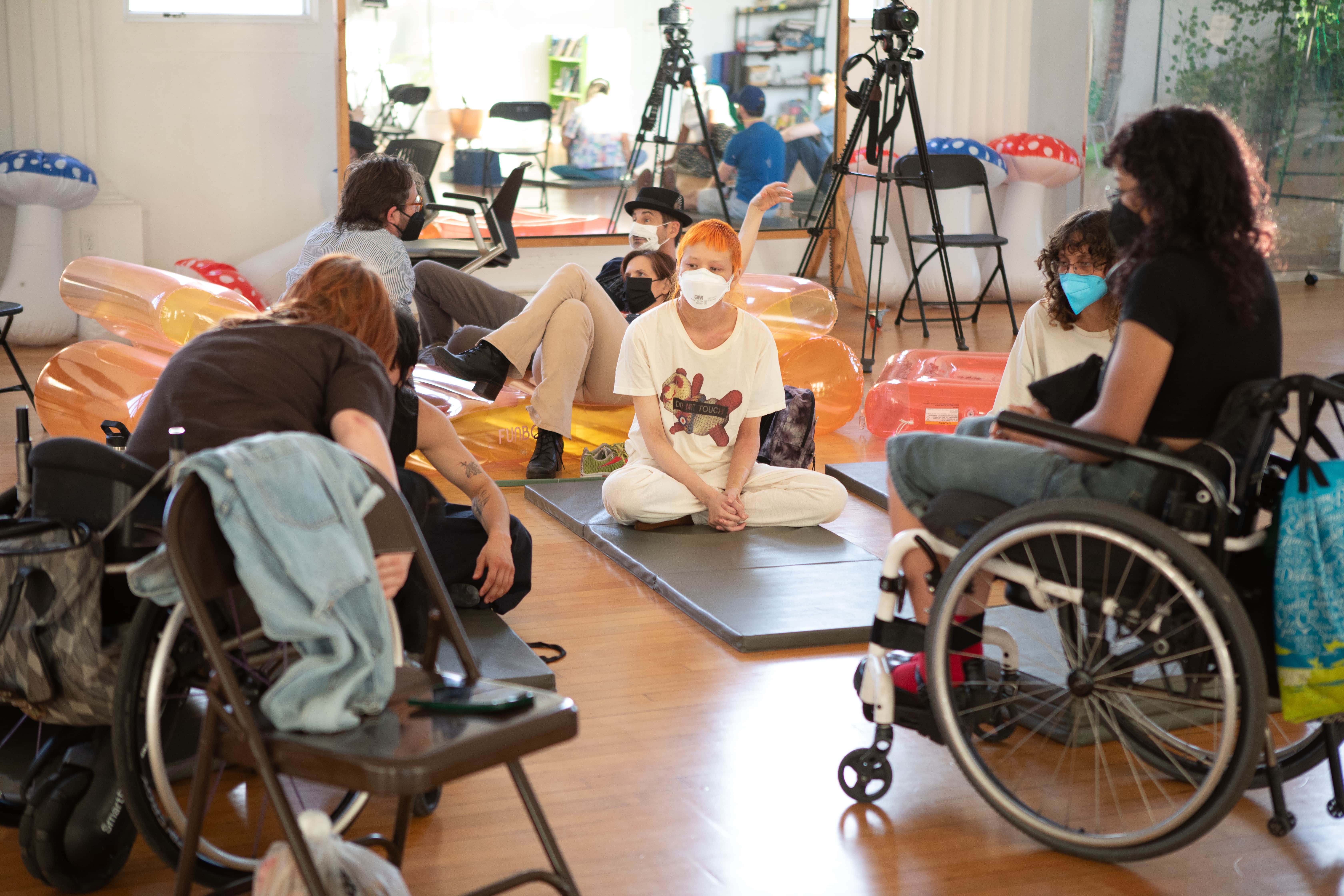
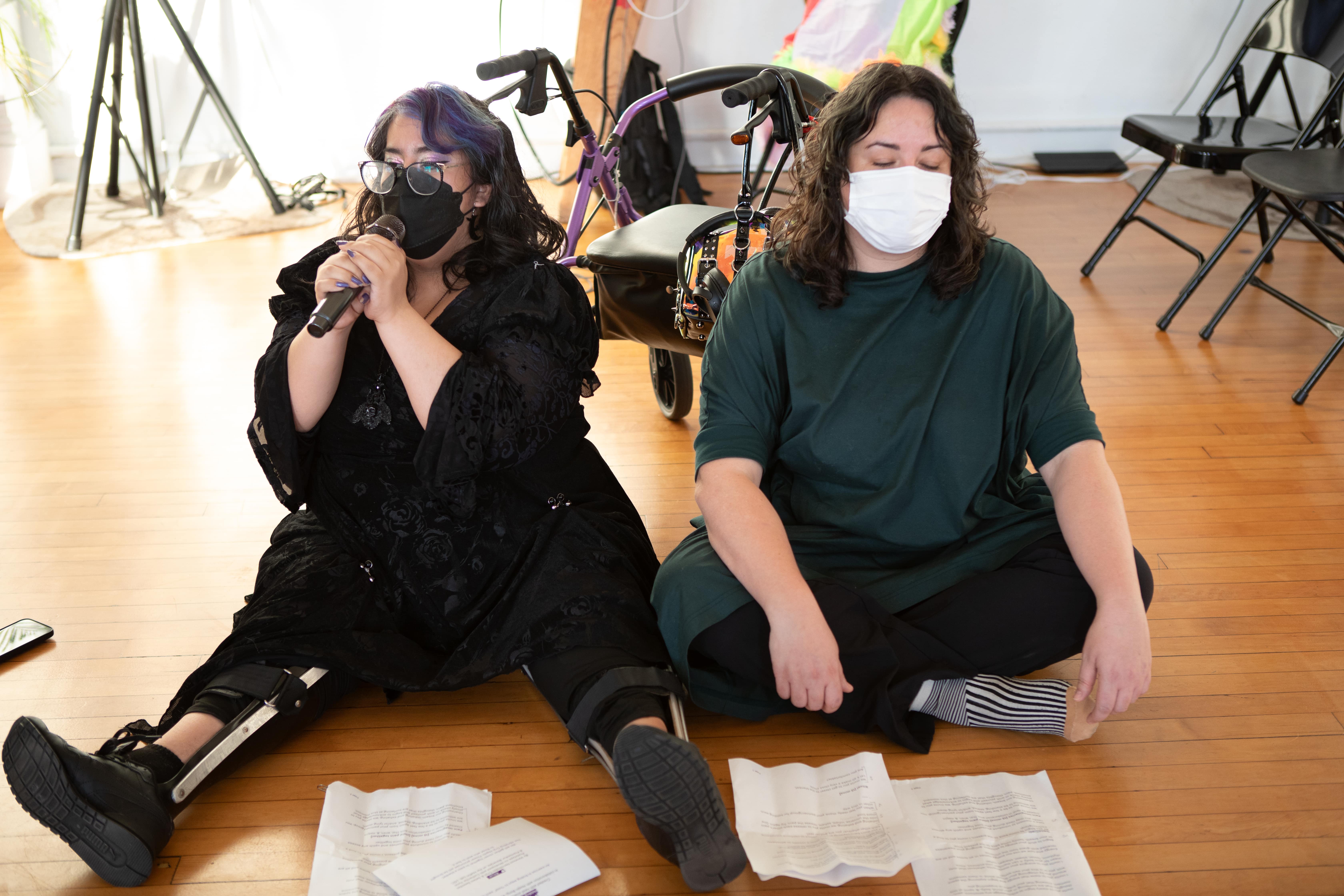
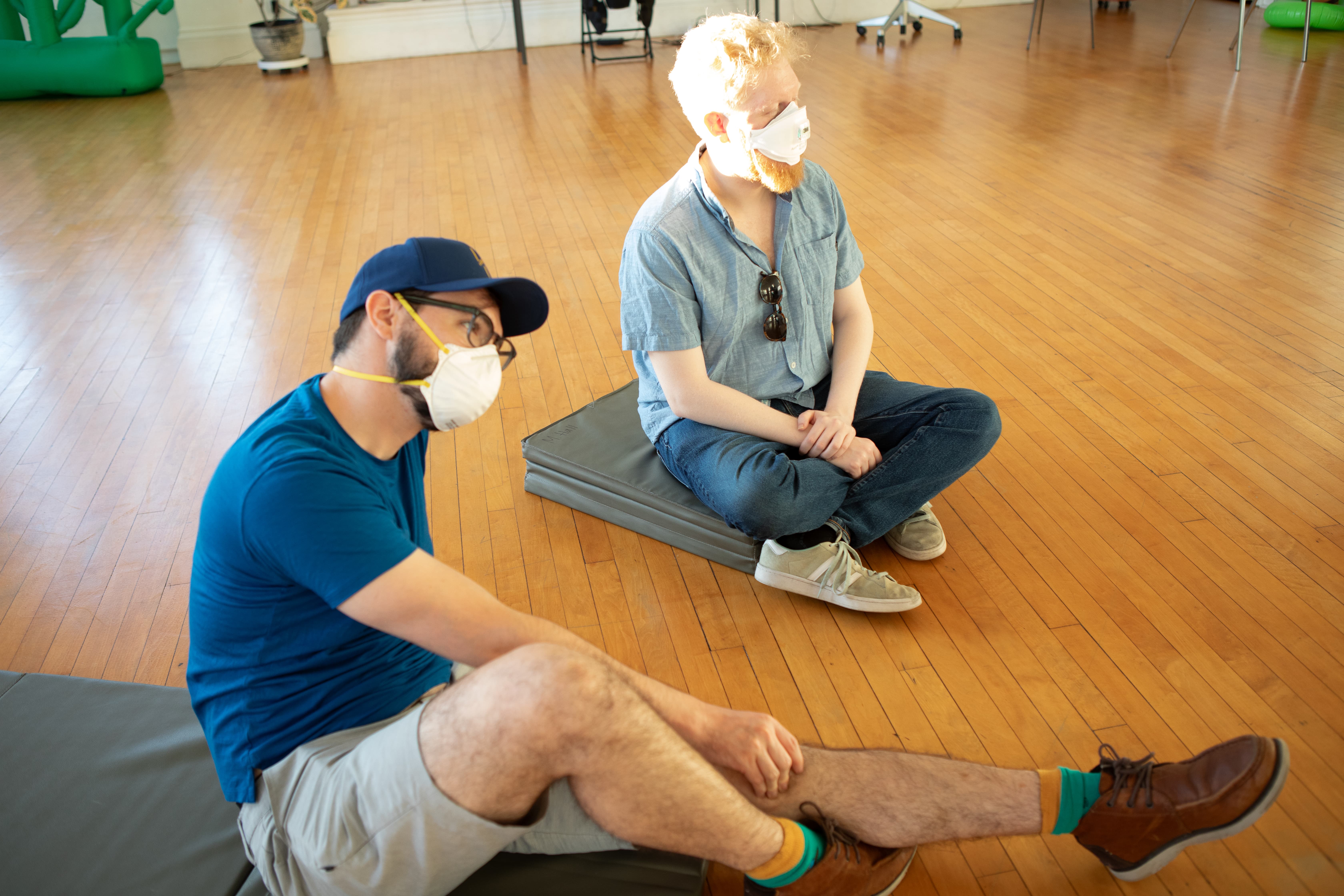
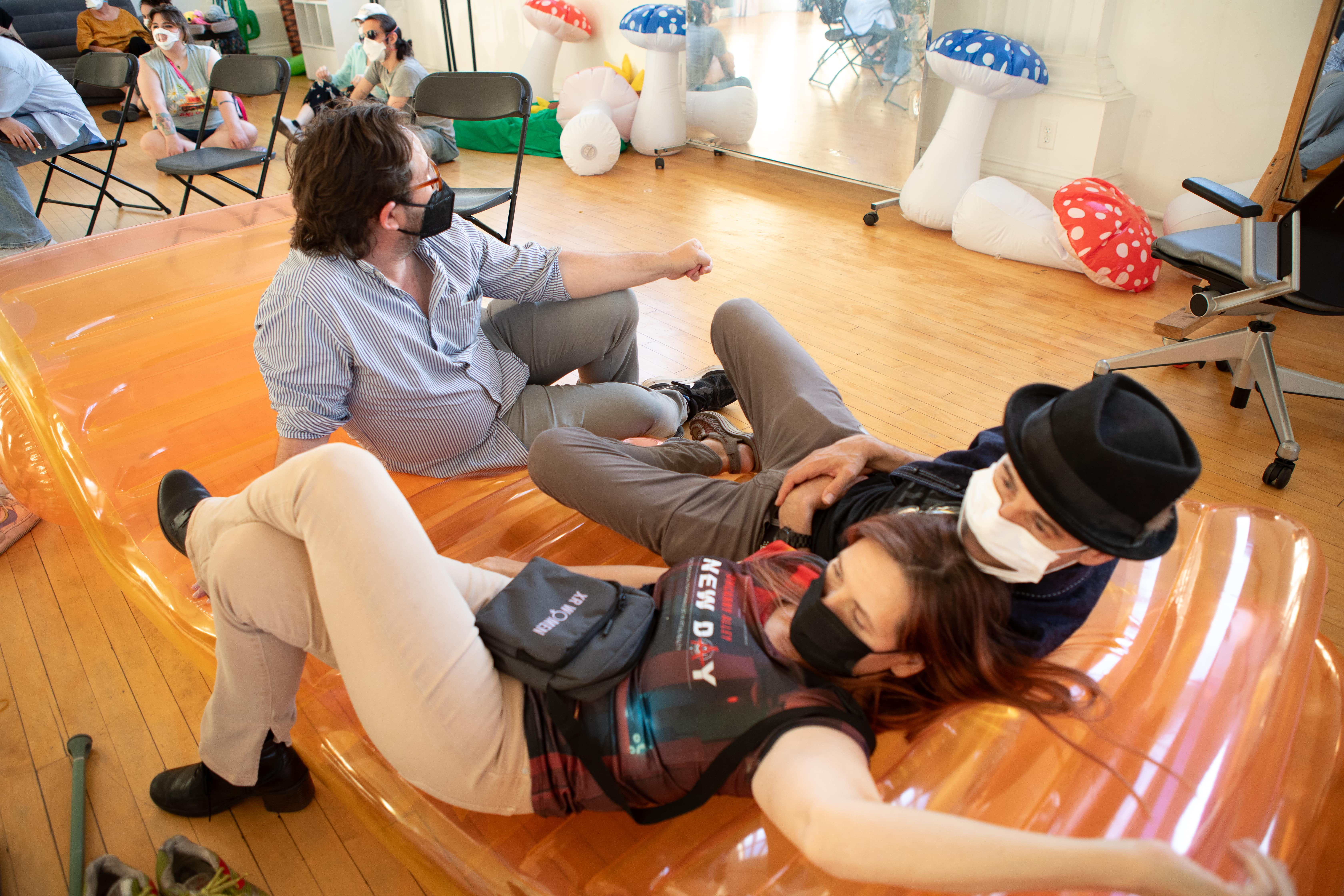
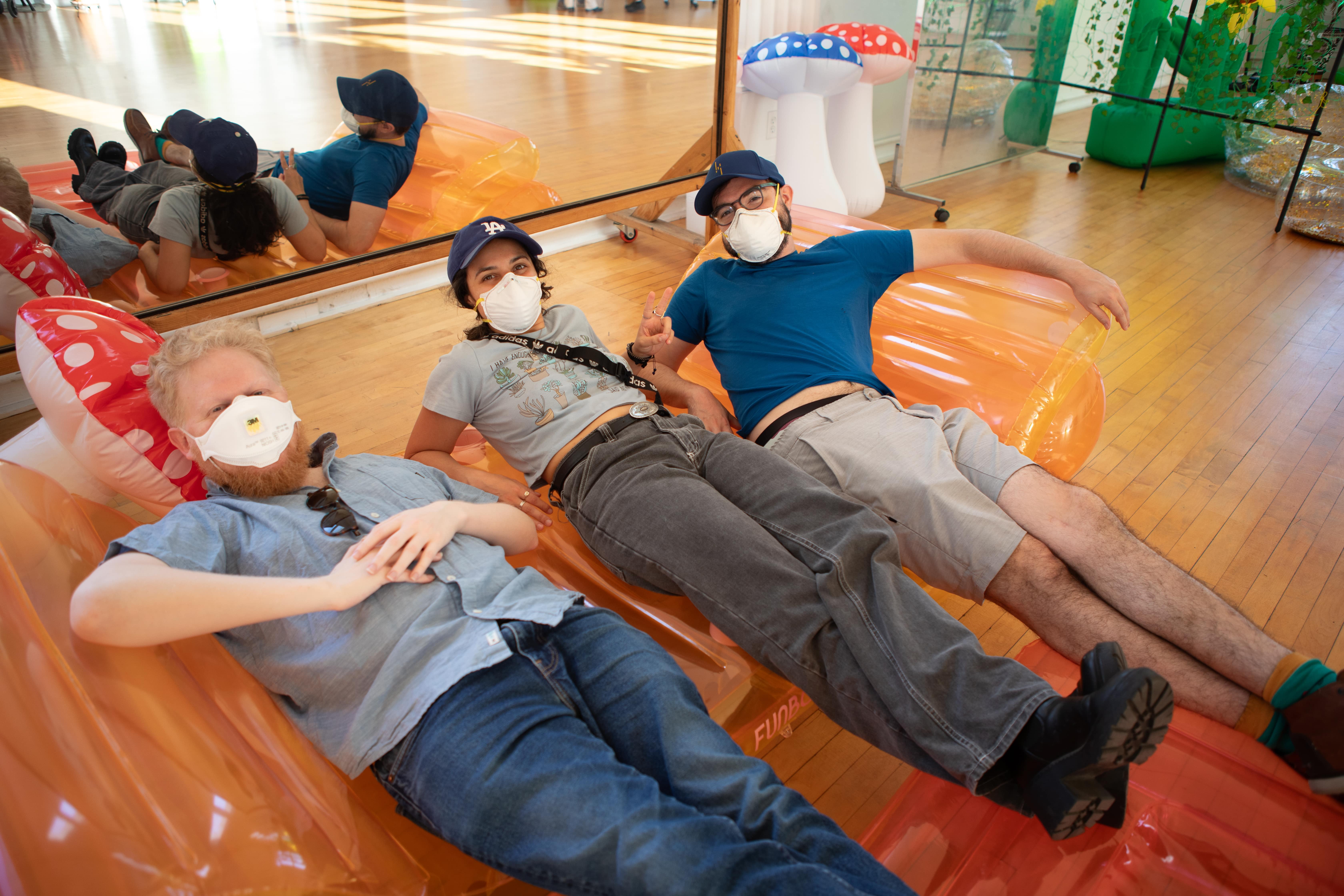
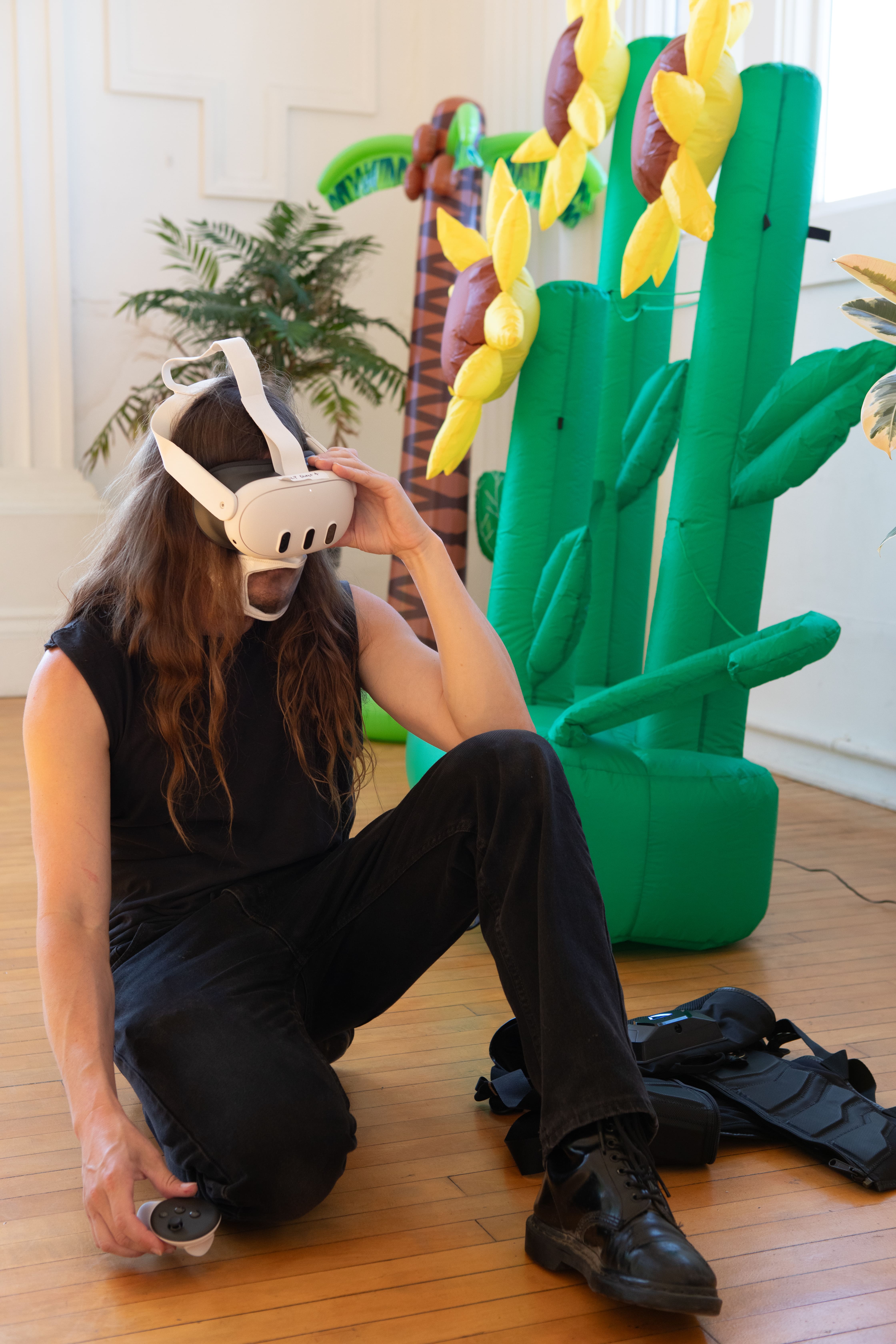
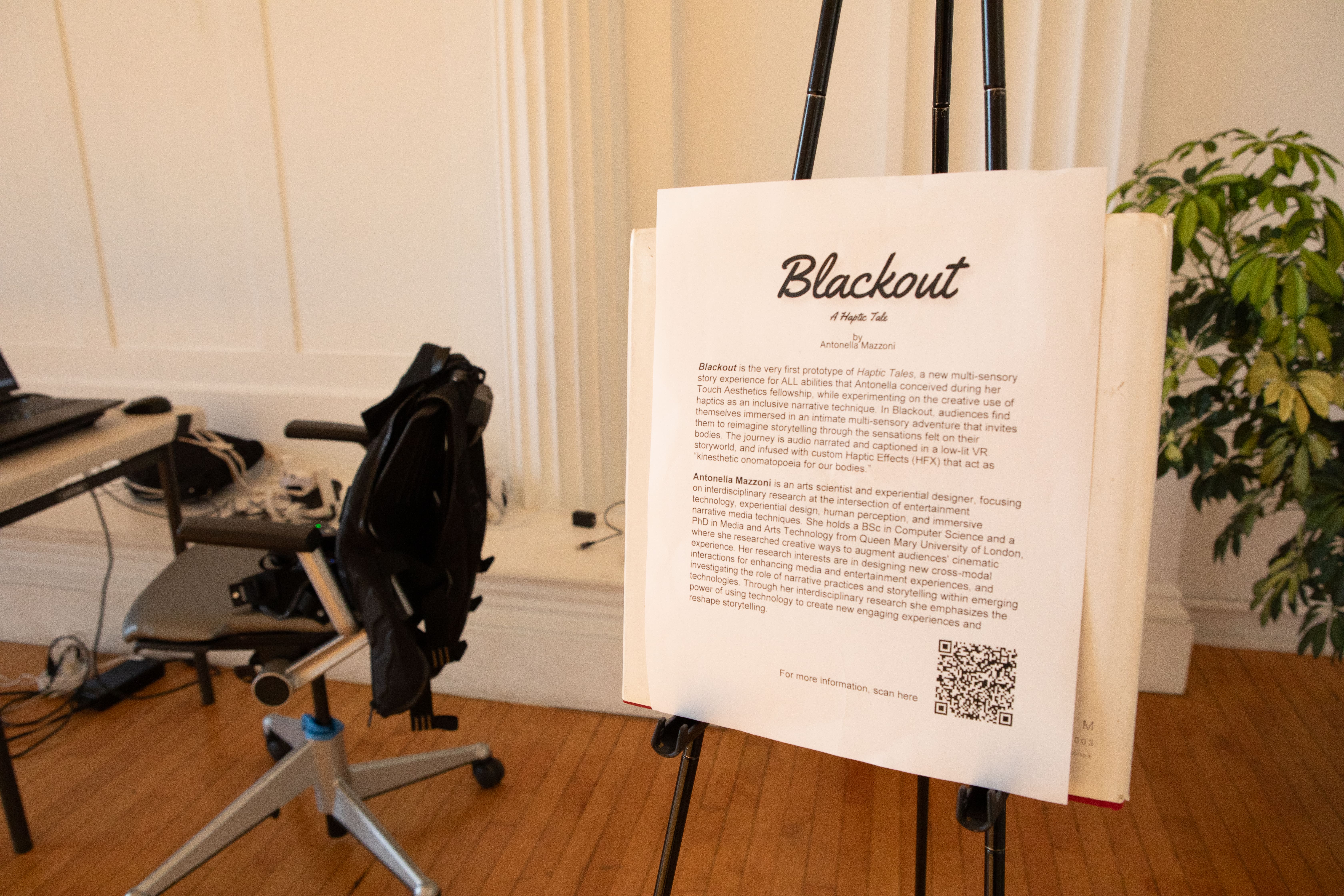

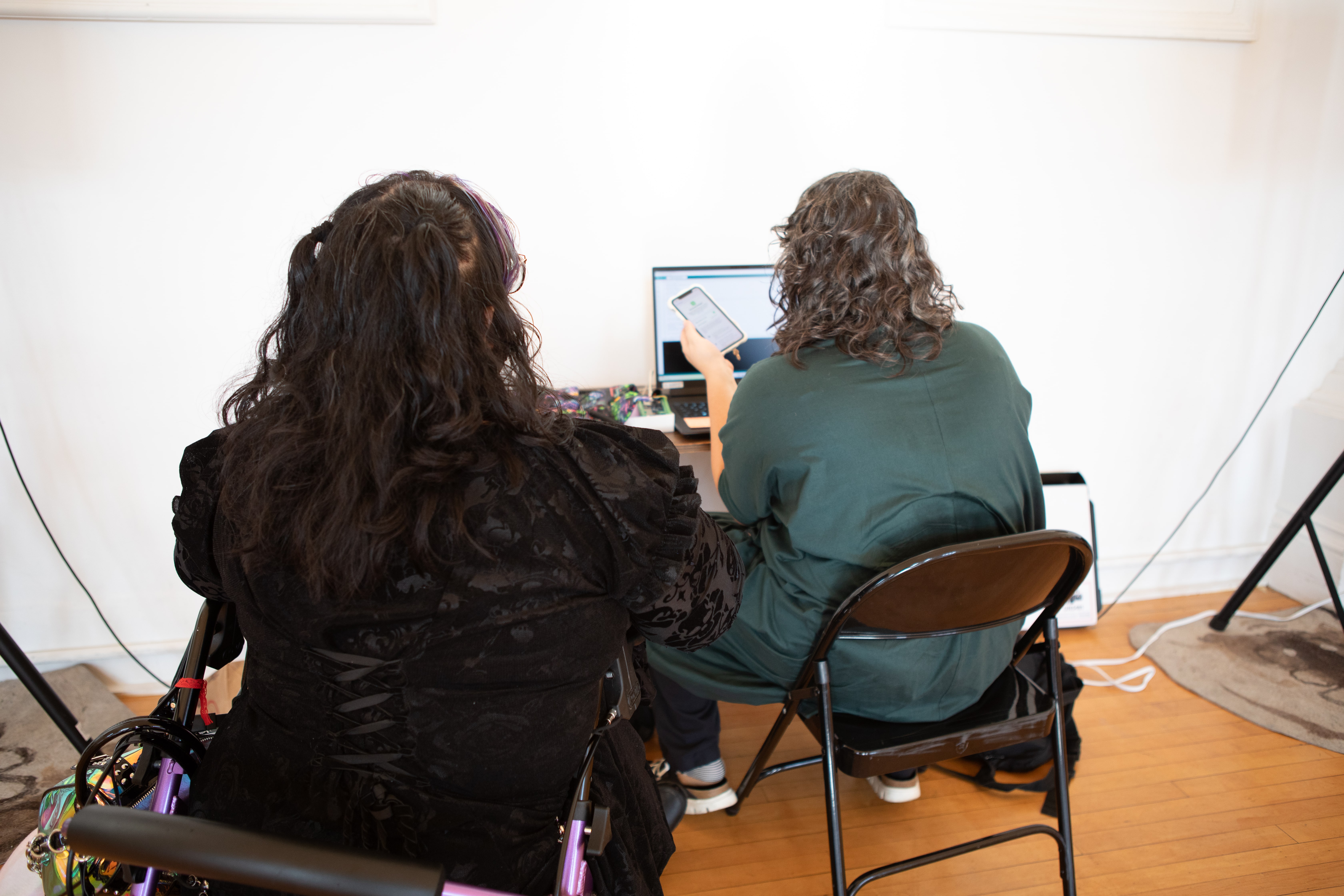
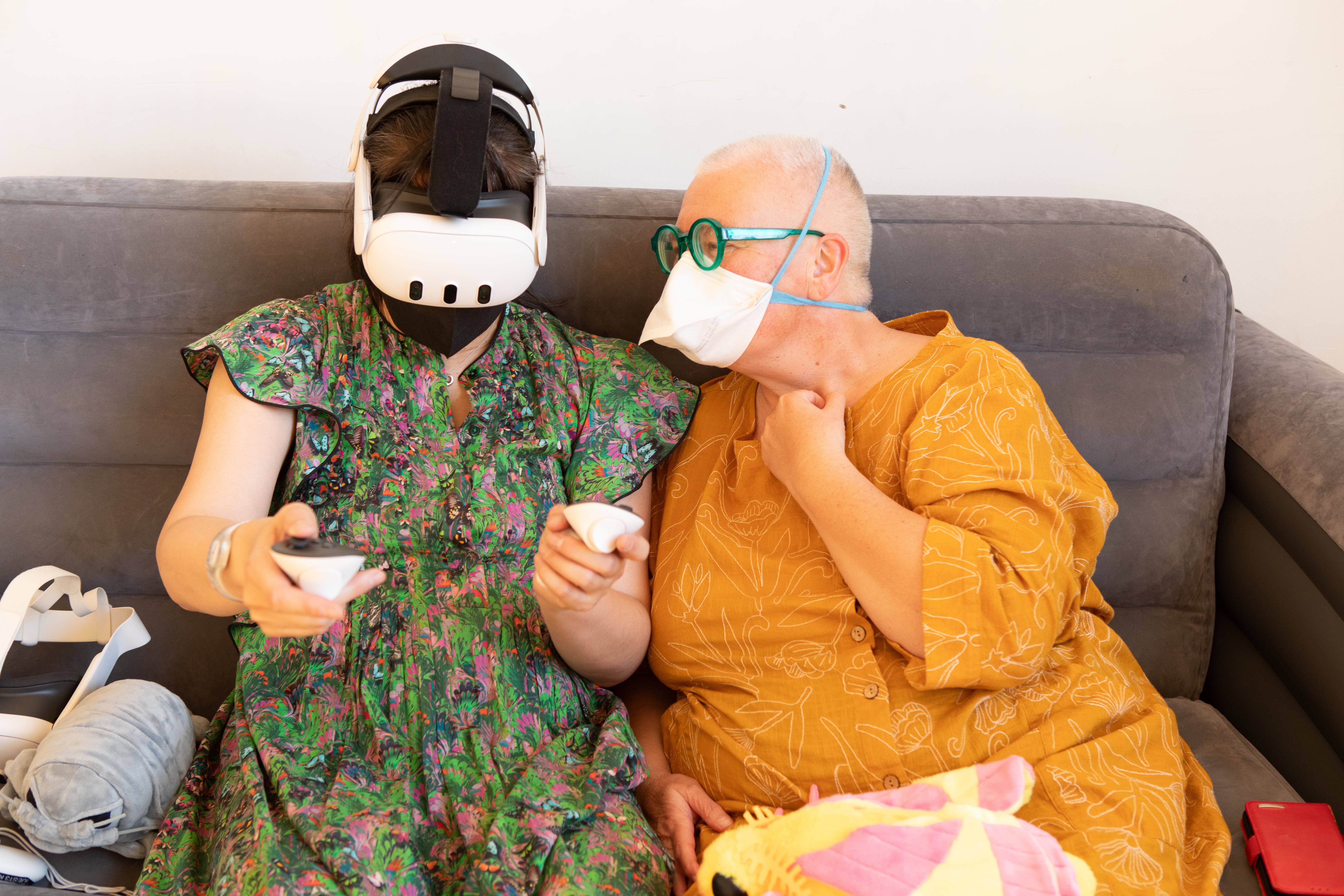

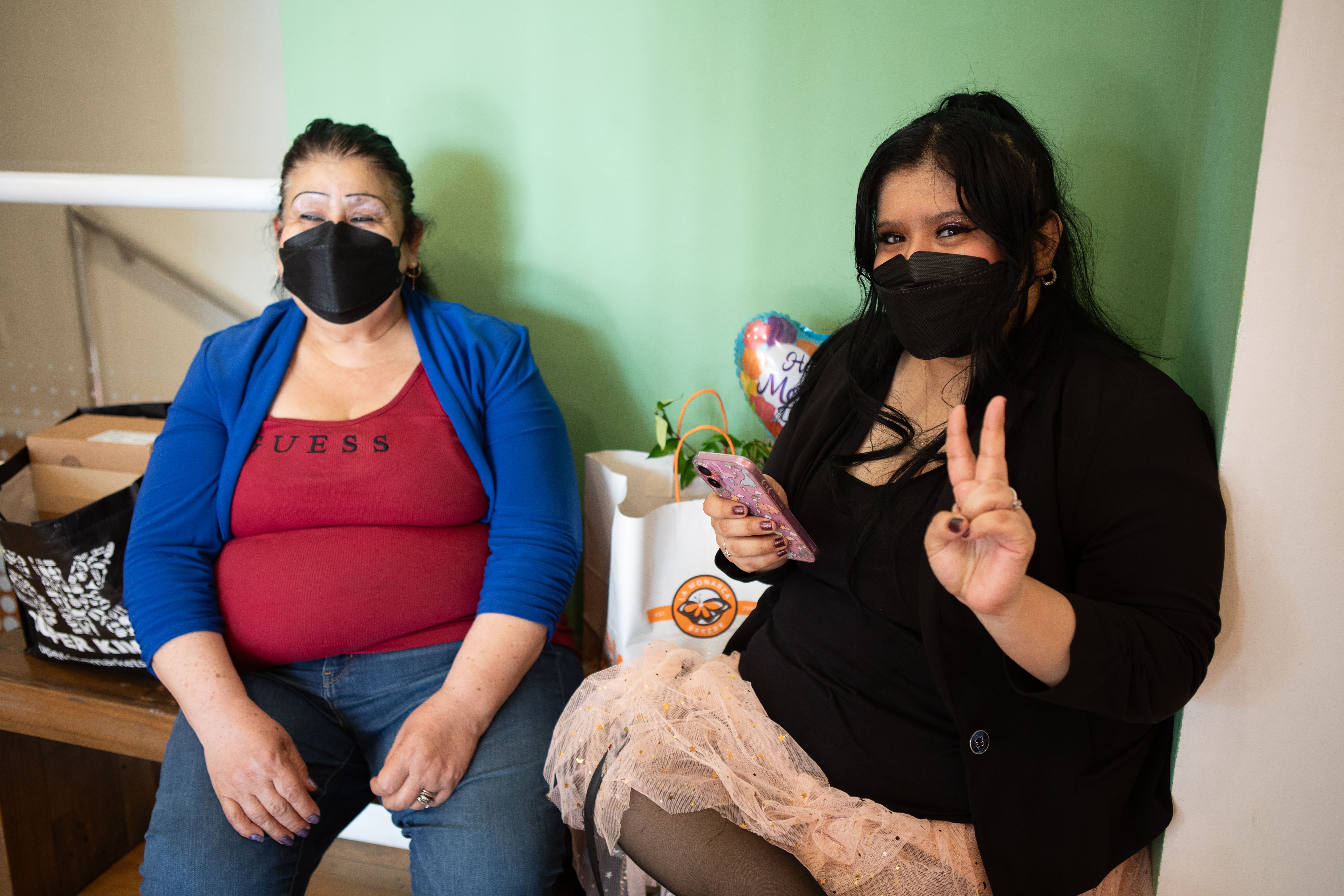
Touch Aesthetics Activation Video
2025 Fellows

Olivia Ting
Olivia Ting is a hard of hearing visual artist, designer, photographer, video projectionist, and pianist. She explores audial perception without hearing and the intersections of sound perception interpreted as speech, noise, and music (organized sound). Without her hearing aid and cochlear implant, she perceives nearly no sounds, so visuals stand in for the audio that she is familiar with, but hears and not hears. Formerly a pre med major at Pomona College, she went on to a second degree in graphic design at Art Center College of Design in Los Angeles. She worked for design and branding agencies in New York City for several years before returning to San Francisco, where her work expanded to collaborative video projections with dance choreographers and museum exhibits. She received her MFA Art Practice from U.C. Berkeley and is currently freelancing and developing new work reconnecting with her music background.
Olivia Ting aims to explore haptic emotions and memories during the Touch Aesthetics Fellowship

Antonella Mazzoni
Antonella is an arts scientist and experiential designer, focusing on interdisciplinary research at the intersection of entertainment technology, experiential design, human perception, and immersive narrative media techniques.
She’s been working as a researcher across academia and the industry for over a decade, on many themes intersecting technology, the sciences and the arts. She holds a BSc in Computer Science and a PhD in Media and Arts Technology from Queen Mary University of London, where she researched creative ways to augment audiences' cinematic experience.
Her main areas of expertise are Experience Design, Immersive Storytelling + World Building, and HCI - in particular UX, Interaction Design, Cognitive Science, and Behavioral Psychology. Her research interests are in designing new cross-modal interactions for enhancing media and entertainment experiences, and investigating the role of narrative practices and storytelling within emerging technologies. Through her interdisciplinary research she emphasizes the power of using technology to create new engaging experiences and reshape storytelling.
Her acclaimed research work revolved around wearable technology and film studies, in which expressive haptic sensations accompanied mood music to enrich emotions in film &
entertainment. Her novel approach also aimed at offering Hard-of-Hearing audiences with an enhanced emotional cinematic experience, by providing a multi-sensory encounter with the emotions evoked by the film score through involving the sense of touch
Antonella aims to explore the use of haptic sensations as a new universal type of narrative form in digital storytelling during the Touch Aesthetics Fellowship
![a photo of Vanessa, a chicana woman with caramel skin. She is leaning against a graffiti wall and on top of her tilting walker named Pluto. Her outfit gives dreamy-cyber-gothic-romantic vibes. She is wearing a flowy long sleeve mesh blouse with a digital design. Her black skirt with red flowers is slightly visible. Framing her is a metal looping bike stand]](/criptech/sites/default/files/styles/large/public/inline-images/Vanessa%20Herna%CC%81ndez%20Cruz%20Headshot_%20By%20Whitney%20Browne.jpg?itok=NnmDhgSX)

Vanessa Hernández Cruz + Selwa Sweidan
Vanessa Hernández Cruz (she, her, ella) is an interdependent Chicana Disabled dance artist, filmmaker, visual artist, poet & an Intersectional Disability Justice activist. She is from the unceded lands of the Tongva & Kizh lands colonially known as Los Angeles, California. She holds her BA in Dance Science from California State University Long Beach. In late 2024, she was an Access Movement Play (AMP) Artist in Residency. Earlier that year, she premiered an experimental contemporary dance solo titled ‘Soul Seeker' for the Los Angeles Contemporary Exhibition show 'Abundance’. This work later premiered at the new Disabled Art’s Mouthwater Festival in the fall 2024 at On The Boards. In addition, Vanessa self-produced & premiered an evening length at Highways Performance Space titled: Void Decryption ERROR; where she successfully live-streamed four QBIPOC Disabled artists on stage with her.
Over the past few years Vanessa’s work has been shown nationally & internationally. In 2024 performed an excerpt of Jérôme Bel’s work ‘GALA’ at REDCAT, performed with Good Troublemakers, and she finished her Pieter Performance Space residency with a showing of a duration dance performance ‘Cyber Realms’. She was a virtual dancer for Kayla Hamilton’s work "How to Bend Down, How to Pick it Up” that premiered at The SHED in NYC in 2024. She was the recipient of the 2023 California Arts Council x The Center of Cultural Power Artist Disruptor Award. In 2023, she had two exciting dance solos that premiered in the summer: “Metal, Plastic, Skin” debuting at The Odyssey Theatre’s Dance Festival and “Exhale Static, Inhale Fumes” with her debut at The REDCAT’s NOW Festival.
Her dance, visual artwork, and writings are often woven together to generate works that have influences of dark aesthetics, horror, abstractions, experimentation, technology, and storytelling that merges her Chicana Disabled experiences.
Selwa’s research has been published in the Internet Policy Review Journal, the Association for the Advancement of Artificial Intelligence Journal (AAAI), the Design Research Society (DRS), and as part of the International Conference on Affective Computing and Intelligent Interaction (ACII). She has presented research and performances at the College Arts Association (CAA); Design Indaba; Eyebeam, Culture Hub; Humanities, Arts, Science and Technology Alliance and Collaboratory (HASTAC); Glendale Tech Week; Institute for Art and Olfaction; International Society for Research on Emotion (ISRE); IXDA World Interaction Day; Society for Science, Literature and the Arts (SLSA); South by Southwest (SXSW); and VRLA. She has co-curated exhibitions and symposia including Beyond Embodiment, Clustering, DECOLONIALATHON, Performative Computation and Super Radiance. Selwa has been an artist-in-residence at PRAKSIS Oslo, Performing Arts Form in St. Erme France, a research resident at Los Angeles Performance Practice (LAPP), a SLOMOCO Virtual Artist-in-Residence, a collective resident at NAVEL, a postgraduate fellow at ArtCenter College of Design, an interactive design fellow at Fabrica, and was awarded “Best Overall” at the Microsoft Design Expo ’15. Her work has been exhibited and screened at Artificial Knowing, Biofiction Science Art Film Festival, Bevilacqua Gallery, Center Du Pompidou, Femmebit, Finnish Culture Institute of NY, HomeLA, Laband Art Gallery, Mandeville Art Gallery, Monte Vista Projects, Spring/Break Los Angeles, TheOther.online, University Arts Gallery at UC Irvine and as part of Oslo Culture Night in Norway. Selwa holds a BA from Smith College, an MFA (STEM) from ArtCenter College of Design and is currently a PhD candidate and Endowed Fellow in Interdisciplinary Media Arts and Practice at University of Southern California.
Through this fellowship, Selwa Sweidan and Vanessa Cruz are exploring haptic desiring, and examining touch practices that contribute to Crip techno-imaginaries. Their collaboration seeks to address ways that touch encounters may foster expanded forms of access, alterity, consent, and intimacy.